-
Posts
352 -
Joined
-
Last visited
-
Days Won
1
Content Type
Profiles
Forums
Blogs
Gallery
Events
Store
Posts posted by joerookery
-
-
Have at it Mike–there are lots of photos available for you to copy on Flickr. Over 1000. God bless and happy Easter.
0 -
No I really have no idea on which unit it is for pictures one or four.
0 -
ps592 by joerookery, on Flickr
ps1217 by joerookery, on Flickr
ps326 by joerookery, on Flickr
ps168 by joerookery, on Flickr
0 -
0
-
The cover here has hooks, but is an officers one,
I am not convinced that this cover is private purchase.
I have a series of pictures of this Regiment.
ps107 by joerookery, on Flickr
ps791 by joerookery, on Flickr
0 -
I wonder of some units turned their covers inside out to hide the red.
The timing is an interesting subject.• I think Chip is right. Mostly they were just removed. However there were some anomalies that presented problems.

For those helmets that had painted numbers as opposed to a cloth numbers one of the options was
the patch!


this technique was used several times I am not sure how/when it was used in all cases.
Then of course there was the inside out treatment.

But again this was done in this picture later in the war.
Here is the cover that Chip had mentioned.

http://www.pickelhauben.net/articles/Uberzug.html
Interesting topic!
0 -
Thank you! I have not even considered that! The medal is pretty clear. Some sort of policeman? But the crown on the collar??
0 -
I really don't know why but this guy is giving me a headache–who/what is he?
ps1117 by joerookery, on Flickr
0 -
ps602 by joerookery, on Flickr
Lieut. in the Army of Hanover 1866
Waldemar Blohm Sec (?) Leutnant in Königl. Hann. 4ten Infanteri Rgt
W. B. Lieutenant of the Royal Hannover 4th infantry regiment.
0 -
Thank you!
That does it–narrows it down to three! Thanks again. Have
0 -
Clearly from a minor state–cannot make out which one–any idea about the medal does it give a hint??
ps176 by joerookery, on Flickr
ps176b by joerookery, on Flickr
Thank you.
0 -
perhaps the first guy is Landsturm???
0 -
Chris,
is there anything on the back of the card that identifies unit or date?
0 -
This is a truly remarkable photo! So much to research. Lots of whys?
b. Landwehr-Infanterie-Regiment Nr. 8 (Nur zwei Bataillone)
Aufgestellt in Germersheim (R.Stb., I., II.) Unterstellung: Kriegsbesatzung Germersheim Kommandeur:Oberstleutnant Hauser
(17. b. I.R.) (Bez.-Offz.
Ludwigshafen)
I.: Major z. D. Engelhardt II.: Major a. D. Simons
Das III. Bataillon wurde ab 31.8.14 das bisherige b. IV./L.I.R.Nr. 10. (s. S. 72) Das b. IV./L.I.R.Nr. 1 war ab 19.8.14 als IV. Bataillon beim b. L.I.R.Nr. 8.
0 -
Short answer is yes but I am not sure how I will make that happen. It is very long paper much wider than my scanner. Are you coming to SOS?
0 -
I actually have one! Well let's be honest it is a reprint of the 1932 catalog with pictures only. There is absolutely no text. Surprisingly, you could buy all sorts of imperial stuff which was destined for veterans but there is absolutely zero text! Sad.
0 -
he seems to have an officers Feldzeichen on the helmet.
Chris,
There were private purchase ones that looked somewhat similar in black-and-white but did not have bullion. Quite normal for this rank. Exceptionally nice picture!
VR
Joe
0 -
Correct speech but not unity with inside the alliance but rather unity between the political parties inside of Imperial Germany. Historically, there had been a huge amount of tension between socialists, Catholic Center, and others during the empire. In the Reichstag, were budgets were approved, the Socialists had just become the largest group. All of the parties voted for war credits–which really means the budget supplemental unanimously. This saying heralded in a concept known as Burgfrieden, which meant that there would be peace with inside the castle wall during the war and political differences would be placed outside for the benefit of Germany. While this peace concept lasted a while eventually the tension rose again. In another plug for the book– this entire undertaking is discussed in English along with the inclusion of a postcard where the Kaiser writes the exact same thing. :rolleyes:
0 -
what Unit Infantrie is possible for that area please
Not so easy. It would help to know which Bezirkscommando he dealt with. But while recruiting was generally regional there were a huge amount of exceptions. Basically, it depended upon different quotas that were given to different Bezirkscommandos each year. In general, many of the Eastern regiments needed recruits that came from the west and major population centers. It would be helpful if we knew this guy's occupation. But even then we would be making guesses. It seems as though he was probably from the lower class, of Polish ancestry and was really quite lucky just to get a slot in a prewar regiment. Often, working conditions and living conditions were far better in the Army than at home. I am not so sure that he was still in the same area as his birth. You would know but we have to remember that he started working at the age of 14 or 15. Again, it would be helpful if we knew his occupation–was he a farmer?–was he unskilled labor?–what did he do when he moved to Hamburg?
0 -
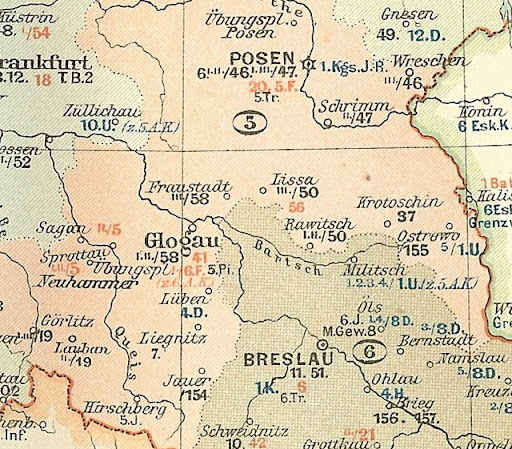
That town is not near Posen. this shows the regimental garrisoning in 1909. The black numbers are the infantry regiments and you can see where infantry Regiment 19 is. it's a good question!
0 -
What I have been trying to determine is where he lived when he was 20 years old? The location of the Bezirkscommando he reported to at the age of 20 could help us pin down which regiment key originally belonged to. I believe the first picture to be from his active time when he was younger 20–22 years old. Hamburg came later and he could well have been a volunteer– often times this would affect the individuals rank and how he was called. Perhaps no longer a musketeer but rather a war volunteer.
0 -
I forgot to add that I think the uniform with the yellow that was somehow lighter blue sure sounds like a dragoon and is probably not related.
0 -
I have been following this avidly. I love doing this kind of research and I don't know why. Keeps me off the streets at night I guess. The real question in my mind is where did he live–which Bezirkscommando did he enter in–and therefore which regiment.
None of that is easy. One thing I think you have missed is that somewhere this guy is 32 years old. That makes him a Landwehr guy. The Polish town that was mentioned is between different Bezirkscommando's and is nowhere near Lauben. so did he live in the Polish town or near Lauben? From what I have seen I would vote for somewhat east of Lauben. I would agree with the assessment that the initial Regiment therefore was 154. I believe the first picture the gentleman is younger and is wearing the regimental uniform of JR 154. At some point in time he moves to Hamburg and ends up in RJR 76–that is consistent with his status in the Landwehr and also consistent with his medals.
The Polish connection is what's really confusing–name changes and provinces. It really is nowhere near Poznan but it is in the V Army Corps. This is loads of fun! Thanks for tracing this.
0 -
Thank you all!
That search was an education and fun to read. Like I said I know zero about medals however, it seems as though I am drawn to this one so I am now in the market for a medal bar I guess. Perhaps I am being drawn to the dark side!
0




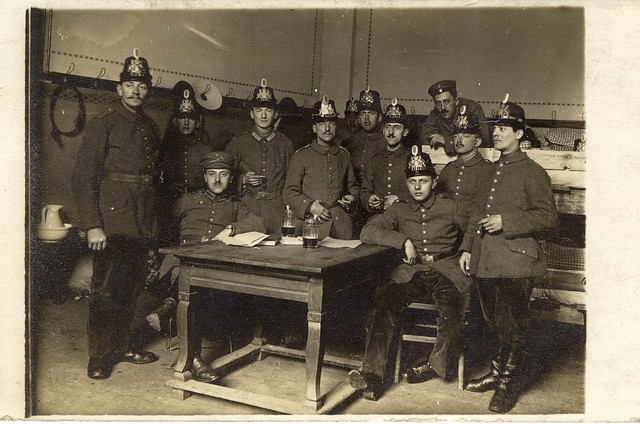
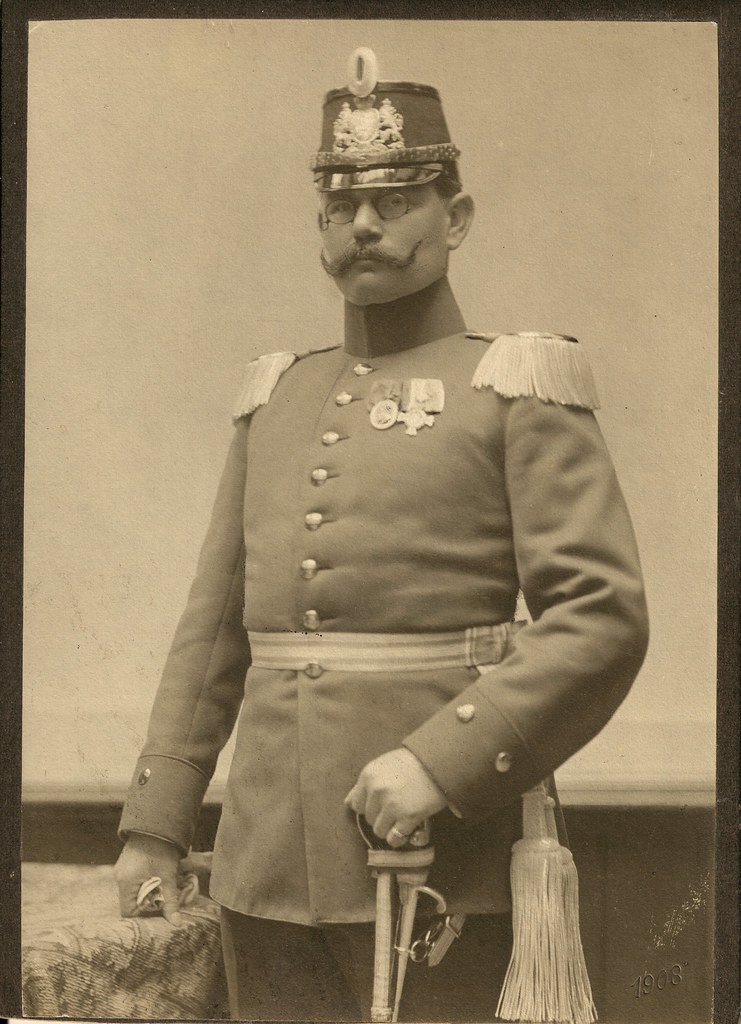
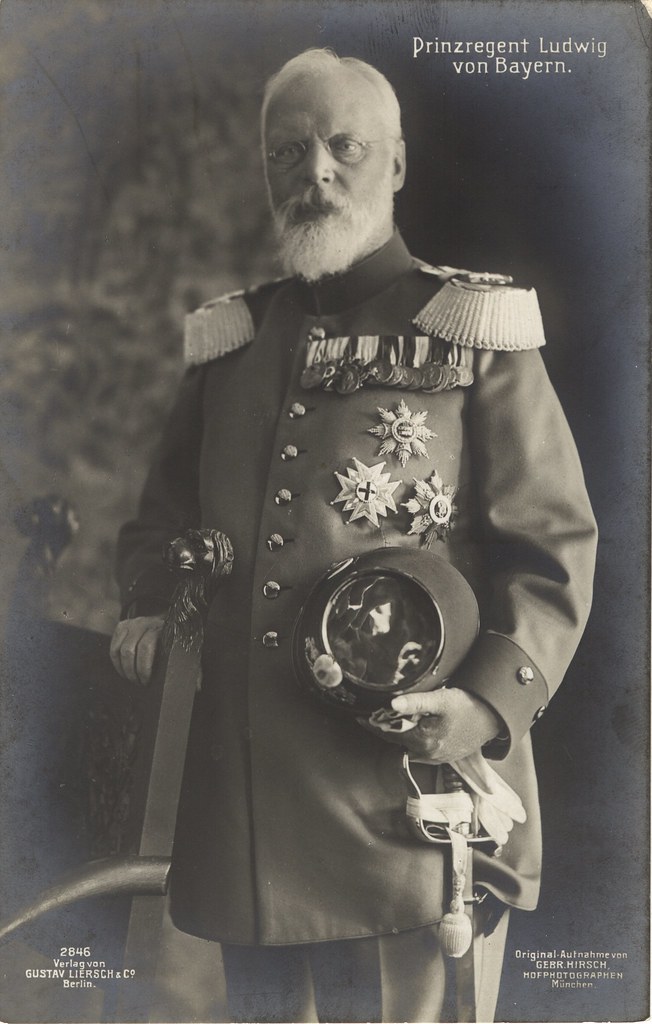
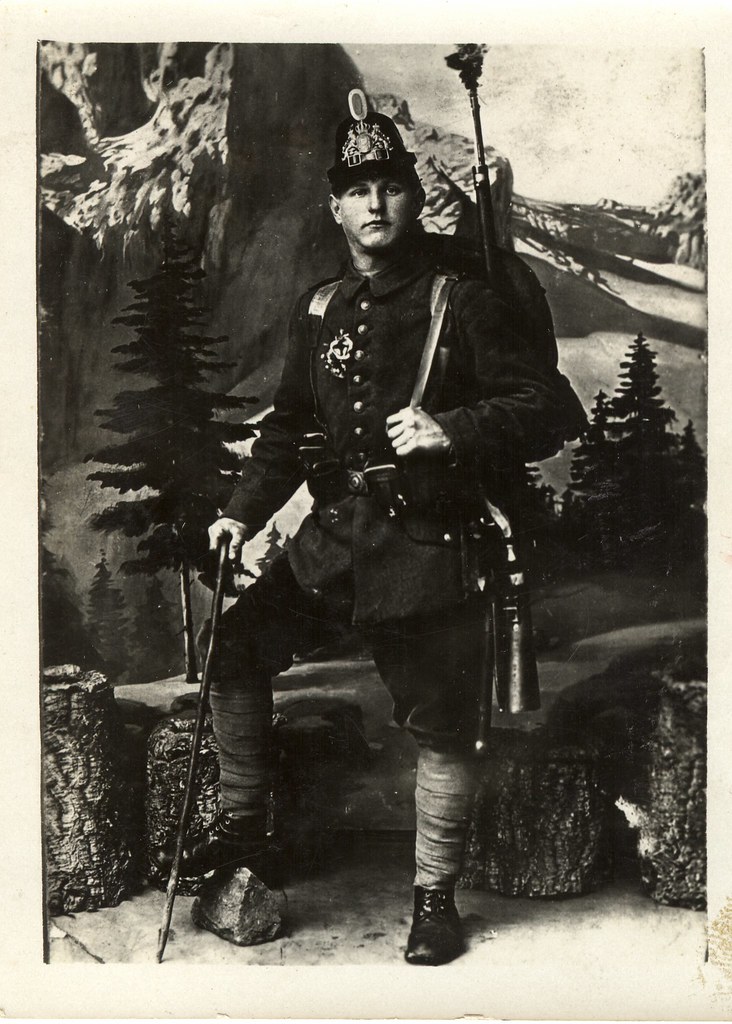
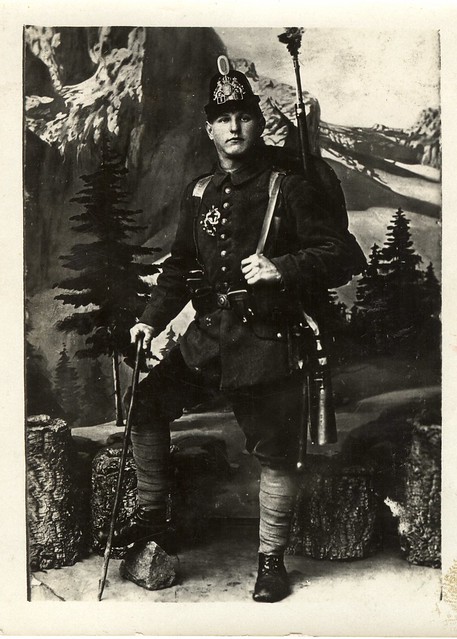


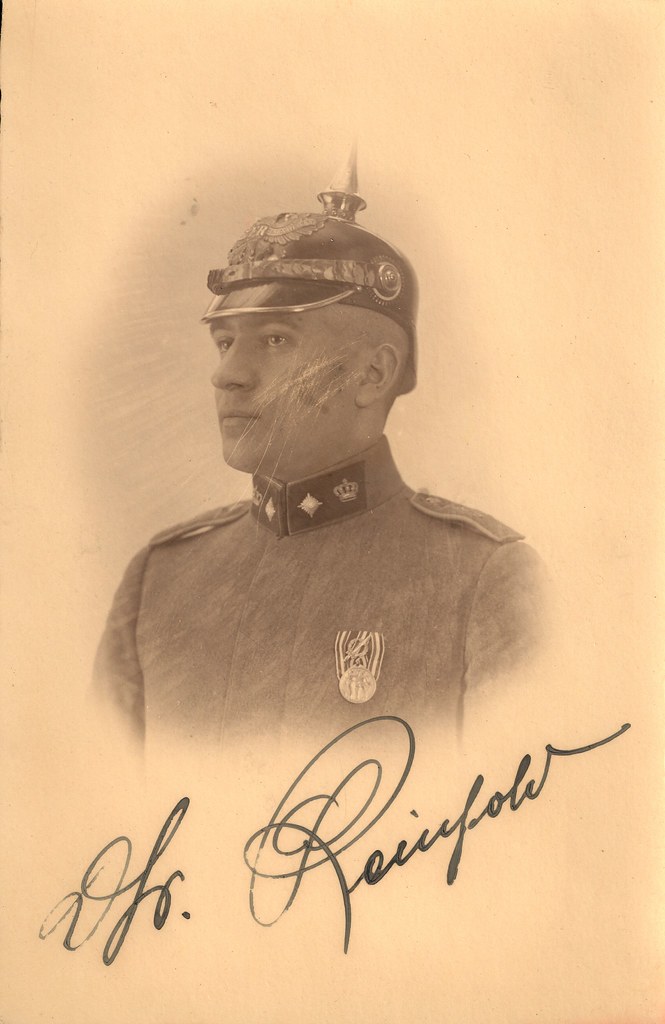
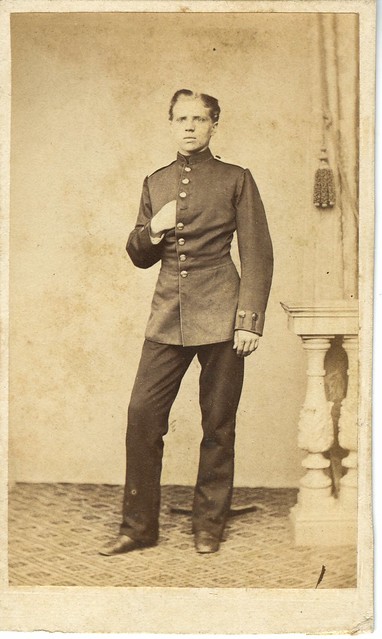

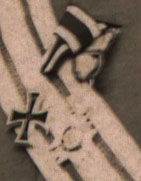
Does size count?
in Germany: Imperial Uniforms, Headwear, Insignia & Personal Equipment
Posted
13cm high!
There were specified sizes however, it became a fashion statement in private purchase helmets to have a longer spike. In general newer helmets have longer spikes then the ones in the late 1800s. Saxony was by far the worst offender of this. There were several efforts on the part of the war Ministry to get this back under control. But as Robin said you could buy anything.
ps1016 by joerookery, on Flickr